Why Climbing Mount Everest Became a Joke
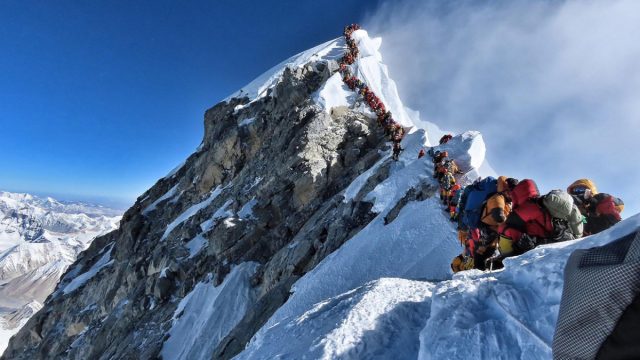
The famous peak of Mount Everest sits at 29,029 feet above sea level, and climbers train for months or even years before attempting their trek. It’s all for the bragging rights that they reached the top of the tallest mountain in the world.
But, lately, those bragging rights have been called into question. A recent post on Reddit went viral with a video showing a very long, packed line of climbers waiting to reach the mountain’s peak. And Redditors had a field day with it.
“Never in the world would I think that the most dangerous and tallest mountain in the world is suffering from overpopulation,” one user joked on the Reddit thread.
Mount Everest was once one of the most challenging to climb in the world. In 1953, Edmund Hillary and Tenzing Norgay became the first adventurers to reach the summit—decades after the failed first attempt of the British Mount Everest expedition in 1922. Since then, it’s become a bucket list goal for adventurers that grow in number by the year.
While it’s still extremely difficult and dangerous, it has become relatively easier since Hillary and Norgay made their ascent. That’s due to its commercialization, with modern climbers paying sherpas to carry their gear, cooks to make their food, and medics available at Base Camp.
Here’s why more outdoor experts and casual observers are viewing the world-famous climb with skepticism.
READ THIS NEXT: 8 Mountains With the Most Epic Views in the U.S.
1. It’s overcrowded.
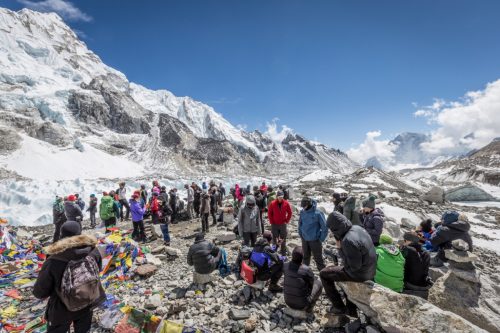
If you envisioned reaching the top of Mount Everest and surveying the peace and calm of nature in solitude, that might fall short of reality.
There are only a few weeks every year when the weather conditions, with slighter warmer temperatures and less wind, allow for summiting Mount Everest, according to CNN. And more than 600 people, according to National Geographic, attempt to do it in that short window. They move at a snail’s pace with another climber right in front of them and right behind them in a very congested line for weeks on end.
That crowding isn’t just a nuisance; it’s also dangerous. Outside reported that while 500 explorers managed to get to the top in one week of 2023, the traffic jams along the way resulted in deaths for some who were simply waiting in line to get to the top.
2. It’s incredibly expensive.
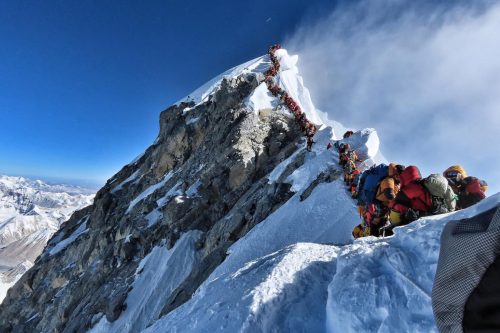
Those looking to scale the highest peak in the world will need a lot of cash in order to do so. Climbers spend thousands of dollars before they even step foot on the mountain: expenses include an $11,000 government-issued permit from Nepal and a $350 liaison officer, according to Outside.
Not to mention equipment costs, flight costs to Nepal and the base camp, and sherpas who are vital for surviving the climb. Outside estimated a range of $30,000 to $100,000, with a standard of about $61,000, after interviewing sherpas
And if you need to be airlifted in case of an emergency, you’re footing the bill for the helicopter, medical team, and any additional hospital care you might need, which can cost an additional $40,000 according to The New York Times.
3. You’ll be contributing to a garbage dump.
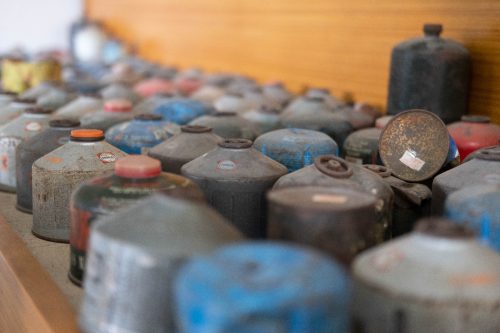
Due to overcrowding and the difficulty of transporting items in and out, visitors are leaving a lot of trash.
Each climber attempting to hike Mount Everest has to spend a few weeks on the mountain at various elevations to progressively adjust to the altitude. And each one of them generates an average of 18 pounds of trash, including oxygen canisters, tents, and food containers, according to National Geographic. The majority of which is left on the mountain.
“Litter is spilling out of glaciers, and camps are overflowing with piles of human waste,” notes National Geographic. And all that pollution could be damaging the Everest watershed, a vital water source for the communities around the mountain.
4. You can die.
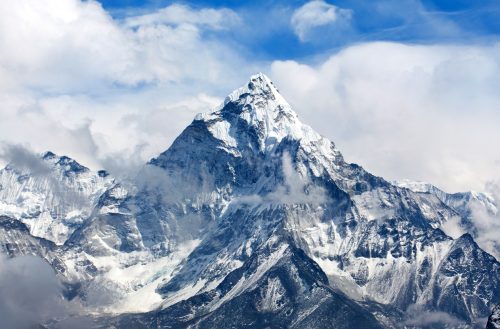
Avalanches, freezing conditions, and falling ice are all natural ways people can perish while climbing to the top of Mount Everest, but one of the biggest reasons people die during their expedition is from lack of hiking experience.
As pandemic restrictions get lifted, travelers are rushing back to Everest to make up for lost time and make the most of their investments, but they aren’t always trained effectively or understand the risks at stake, according to Outside. In 2023, “amid the rush to the top,” Outside notes, 10 climbers died—almost double the 30-year average of approximately six fatalities per season.
RELATED: For more up-to-date information, sign up for our daily newsletter.
5. Three mountains to climb instead.
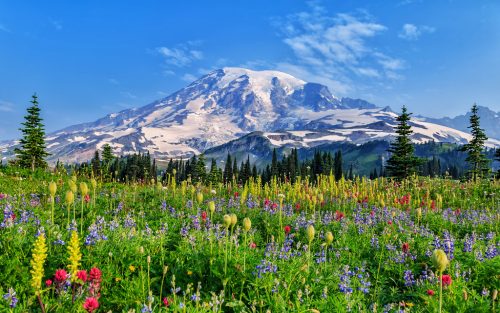
While Mount Everest is still the world’s most famous climb, there are thousands of mountains around the world offering a variety of experiences. Here are just three stand-outs:
Mount Rainier, Washington
No passport is required to explore this accessible mountain in the Pacific Northwest. While Mount Rainier is a challenging climb, its summit stands at 14,411 feet, so it still offers epic views. It’s easy to join a guided group trek spanning four to five days and learn mountaineering skills along the way.
Mount Kilimanjaro, Tanzania
Those looking to tick off an international climb on their bucket list should consider Mount Kilimanjaro, which is often recommended for beginner adventure climbers especially. Its peak sits at 19,341 feet, but the trek doesn’t require advanced technical mountaineering skills or the use of ropes and crampons, meaning climbers who are physically fit and properly prepare themselves can enjoy a relatively smooth climb. The mountain is located within Kilimanjaro National Park, a UNESCO World Heritage Site, and climbers pass through various ecological zones, including rainforests, moorlands, and alpine deserts.
Annapurna, Nepal
And for those who still want the bragging rights of climbing up a treacherous mountain in terrible conditions that few would attempt or survive, there’s Annapurna. The tenth highest peak in the world, it is renowned for its technical difficulty, and only the most elite mountaineers attempt it. While it is 8091 meters high, it has a near 40 percent fatality rate, earning its reputation as the most difficult climb on earth.